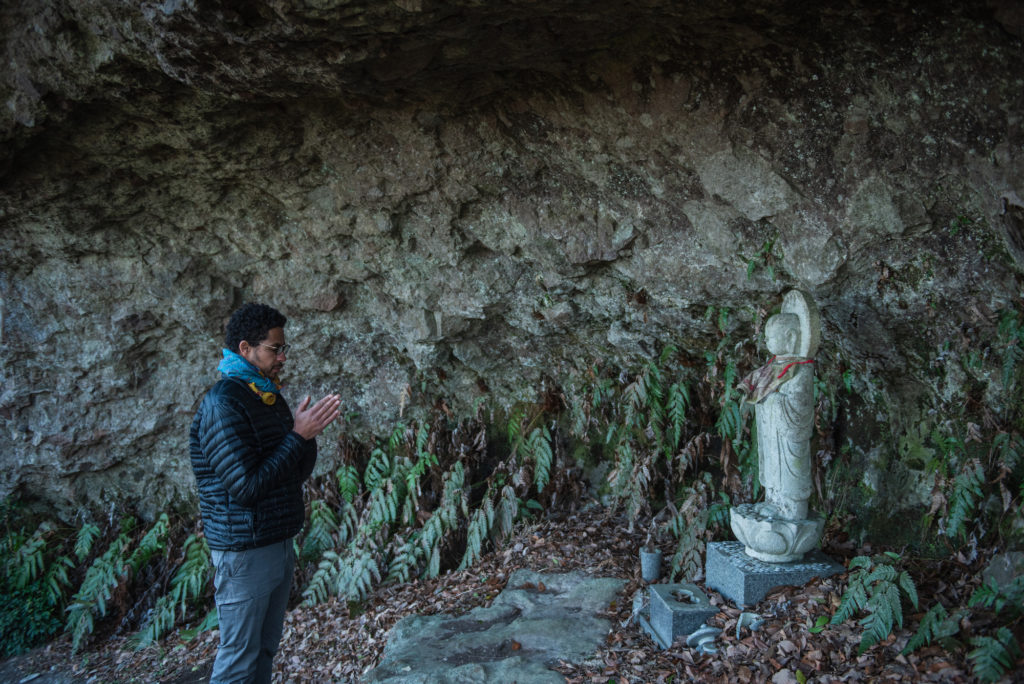Rokugo Manzan and Buddha – A prayer to all of creation
The rocky crags and peaks of Rokugo Manzan have always been the source of religious worship. One manifestation of this we can see throughout the peninsula is the frequent rock hewn icons of Buddhism into the craggy sides of the mountains.
The volcanic rock that makes up the landscape of this remarkable peninsula are exactly what helped to create the foment of worship culture that would shape its identity. The landscape lends itself so well to the Japanese tradition of mountain ascetism. The fearsome statues of the Fudo Myo-o (Acalanata) and Nio statues (Vajrapani) we see so often here appear like anthropomorphized expressions of the rocky landscape itself.
The Kunisaki peninsula is home to 70% of all rock-hewn Buddhist statues in Japan. The Nio originally not designed to be worshipped, would themselves become icons of worship at around the end of the Edo era, and in more recent times can be found at almost any temple in Japan (which wasn’t the case during the time that Rokugo Manzan flourished).
Statues of Buddha, Nio, nameless symbols of devotion, small jizo statues (a form of Boddhisatva often seen in Japan as a small rock carved monk), pagodas and five layered towers (said to represent the five universal elements) all made of rock, can be found across the whole peninsula and its numerous villages. It is endlessly fascinating to marvel at the fine, detailed work, the myriad of expressions and purpose and even the reasoning behind why there are placed in the positions/places that they are.
The faces of the icons are truly fascinating to contemplate. Some are carved to look kind and merciful, while others look stern as if challenging your piety. The many emotions and thoughts of those who created these icons can still be seen and experienced to this day.

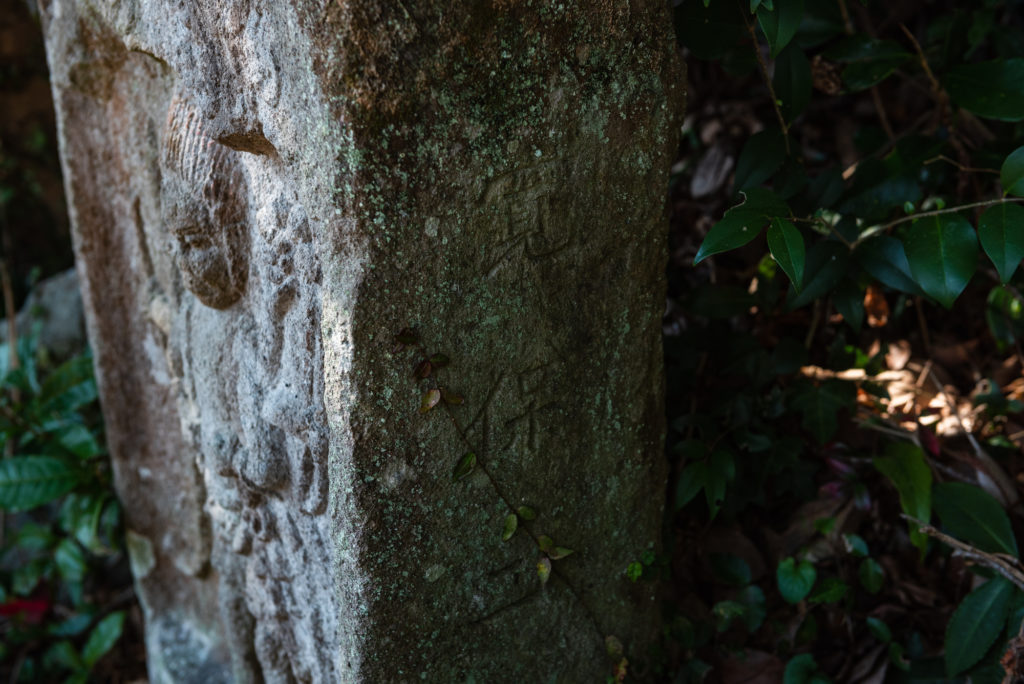
A rock-hewn Nio (Vajrapani) statue looking particularly thick-boned but with an expression that manages to somehow put a smile on your face, stands in front of the Torii gate to the entrance of the Togou Hachiman Shrine. The age of the rock, and the sheer size of the surrounding giant holy cedar trees show us the weight of history behind this shrine.
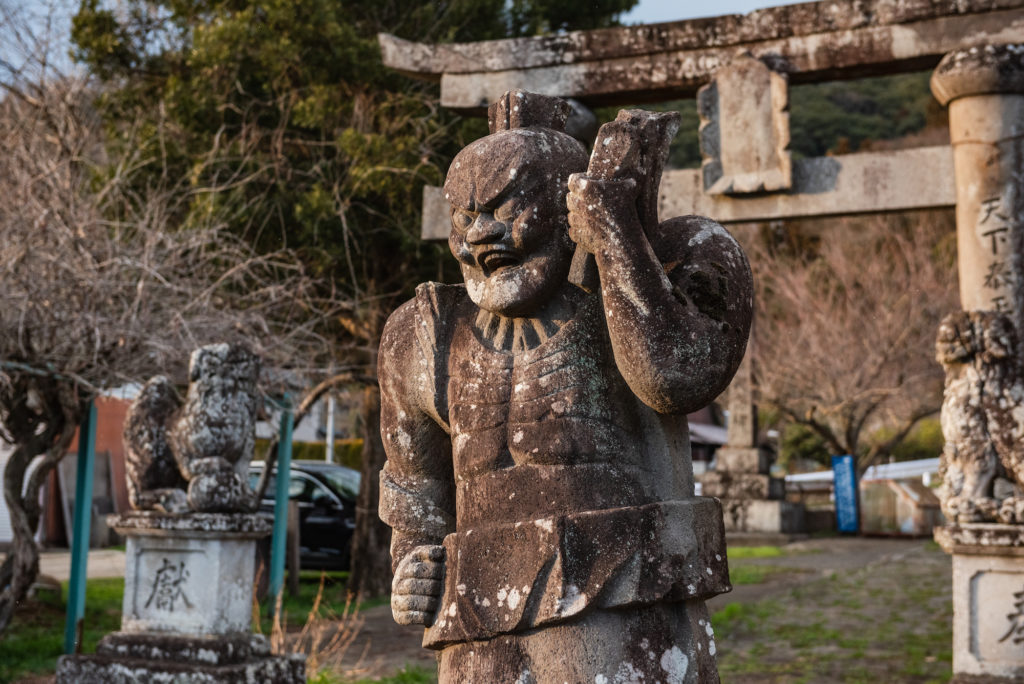
There is a house where the Chief Priest of this Shrine used to live, located on the road approaching this shrine, known as a “sando”. Mario now lives in this house. He took over the house which had fallen into disuse for many years, and restored it for future generations to enjoy.
A pair of Nio statues that stand on the main sando on Mount Futago are the biggest on the peninsula. They are made of rock, and exude immense power and presence. We are told it is very common in Kunisaki peninsula for the Nio to be placed in front of the temple gates.
We are reminded of the fact that the majority of Nio statues we see across other parts of Japan are made of wood, and enshrined within the temples main gate, not in front of it.
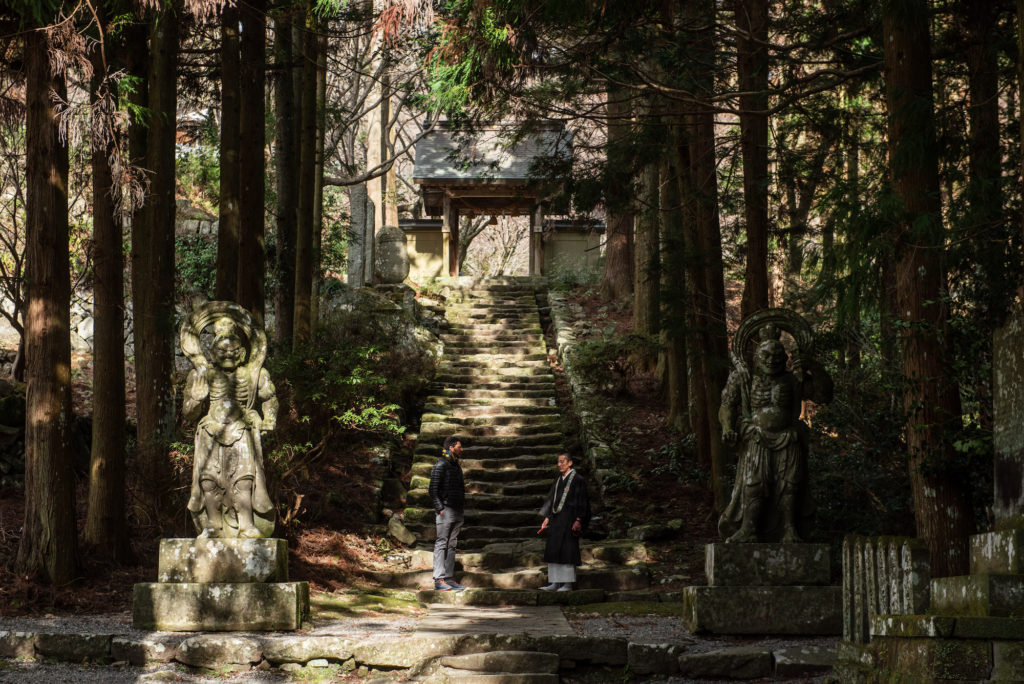
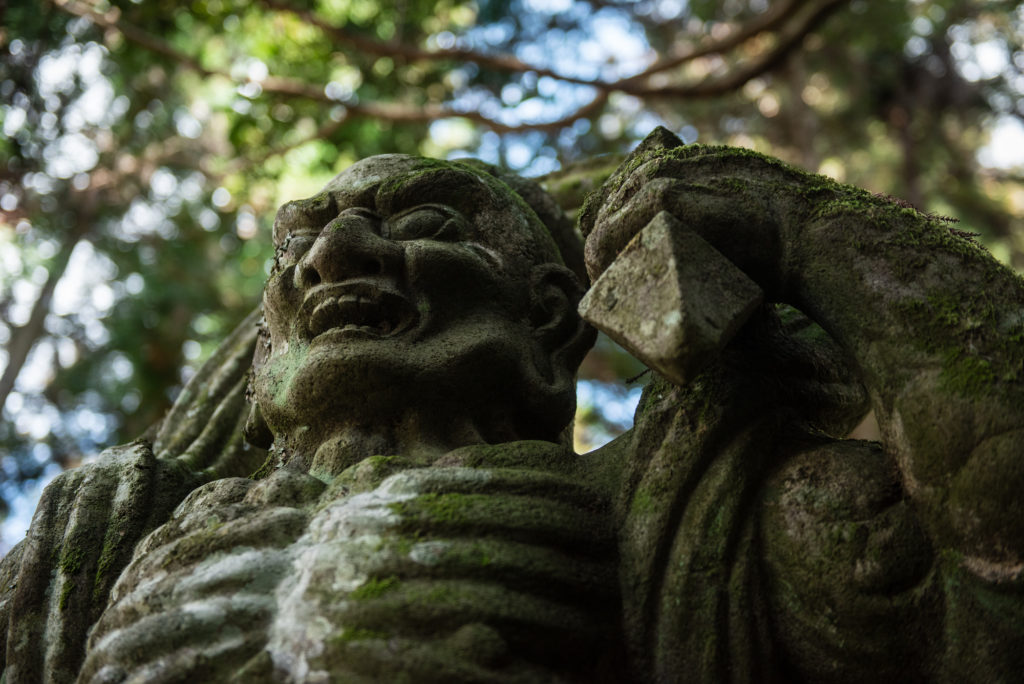
We climb up some very uneven rock stairs (said to be laid down by “oni” demons in just one night) lead us to the Kumano-Gaibutsu rock-hewn statues of Buddhist icons. They are the nations’ oldest and largest depictions of the Fudo Myo-o (Acalanata) and Dainichi-Nyorai (Mahavairocana).
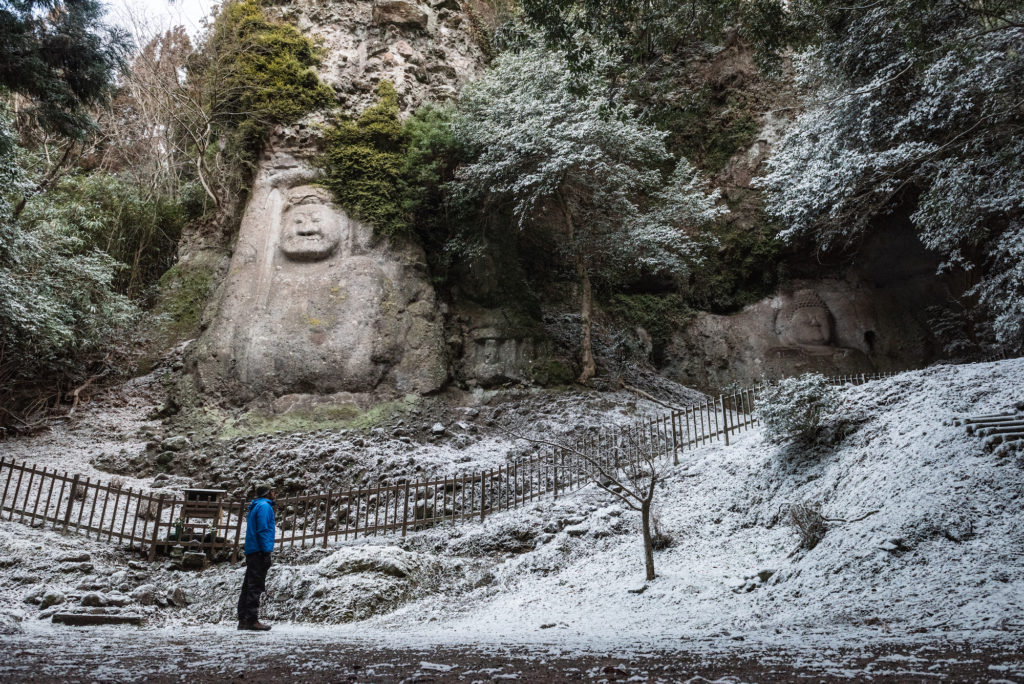
Despite their size, their expressions are blissful. This is refreshing because Fudo Myo-o in particular is almost always depicted with a fearsome, fierce expression. Perhaps it’s the many years of rain and exposure to the elements that have rounded off his features and created what may even look like a hint of a smile on his face.
It amazes the onlooker as to how the devotees from so long ago could achieve such feats of technical mastery. It is enthralling to think how people managed to carve such giant icons and images into the rocks surface, so, so many years ago. The power of prayer and devotion knows no bounds.
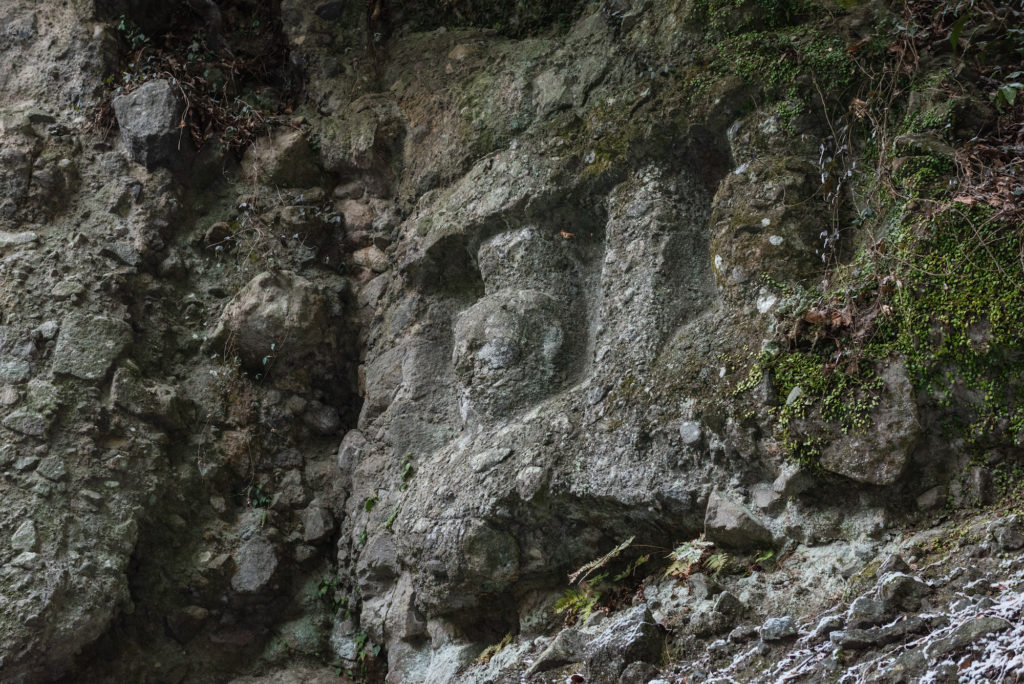
In the main hall of Fudoji temple, many wooden statues of Buddha from the Heian period can be found.
It is understood that the principal object of worship during the Heian period was the “Yakushi Nyorai” or Bhaisajyaguru (Buddha to cure all ills), a seated image of the Lord Buddha. However, located in the center of the main hall is none other than a statue of Fudo Myo-o (Acalanata) from the Kamakura period. Here in this ancient house of worship we bear witness to trends and fashions of the past. Fudo Myo-o (Acalanata) is said to be an evolution of the image of Dainichi-Nyorai (Mahavairocana) and the older examples of it show a sympathetic and contemplative face, rather than the fierce expressions of later examples.
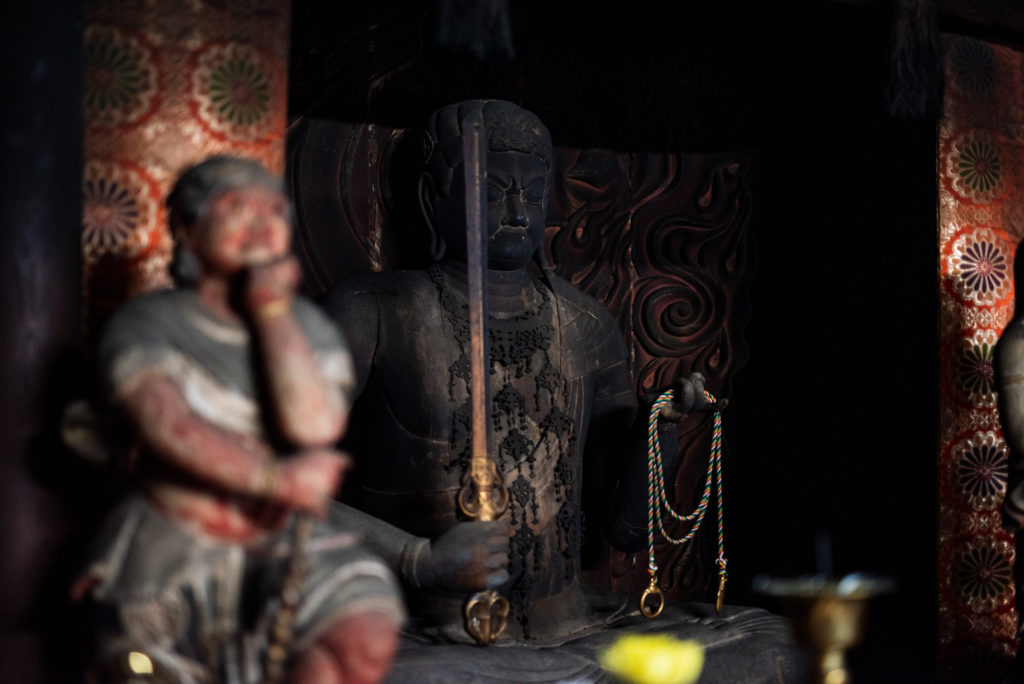
The former temple of Denjoji, which had flourished under the support of Usa Jingu Shrine had been destroyed in a fire but its former grandeur is the stuff of legends. The Makiodo hall now houses the remaining cultural treasures from this former temple which includes 9 Buddhist statues designated as national treasures by the government. Particularly the “Dai-itoku Myo-o” (Yamantaka) which is Japans’ largest example depicting the being riding on a water buffalo’s back. It is said to be depicting Dai-toku Myo-o as a manifestation of Amida Nyorai (Amitabha), which is very rare indeed. There is also a wooden statue of the Amida Nyorai from the Fujiwara era which is awe-inspiring to simply look at, or be in the presence of.
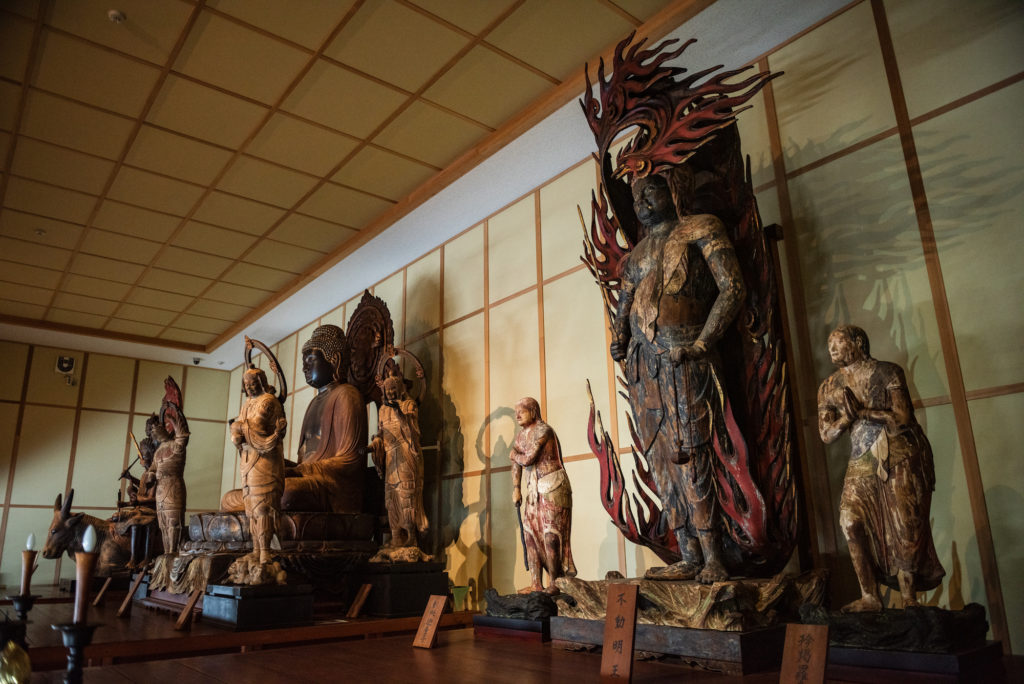
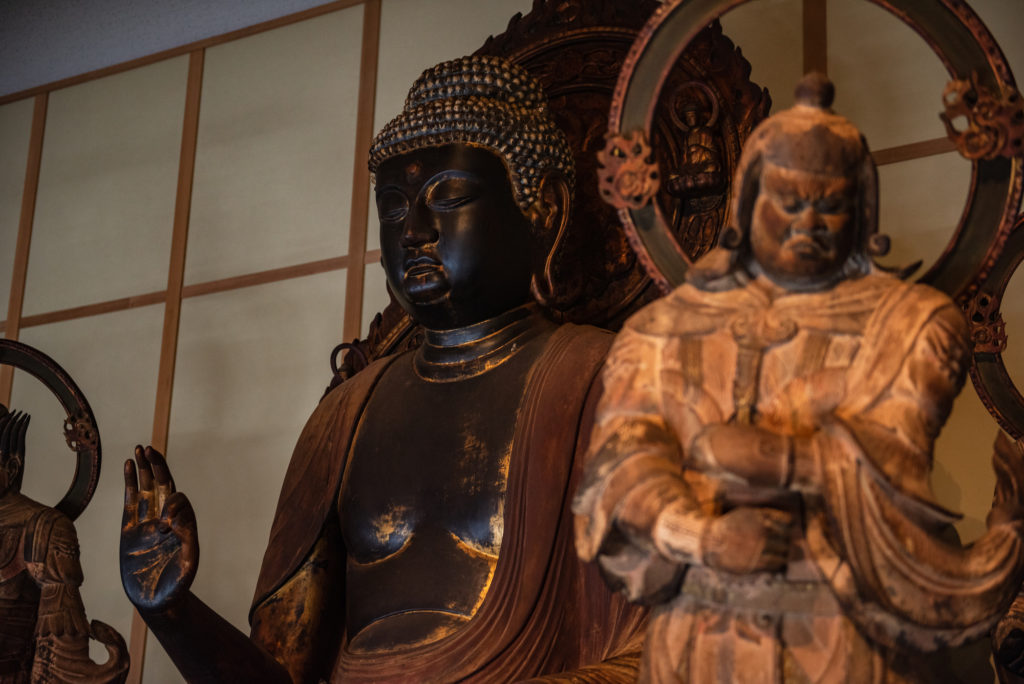
However, what caught our attention the most was an example depicting the enlightenment of Fudo Myo-o. The expression on his face as he attains nirvana, is done in the Tendai sect style. His trademark fangs face heaven and earth respectively as do his eyes. Bulging, one eye faces upwards as the other faces earthwards, indicating his ability to “see all” through his attainment of nirvana. The style of depiction focuses on both the gentleness of enlightenment, doubled with a strength and ferocity.
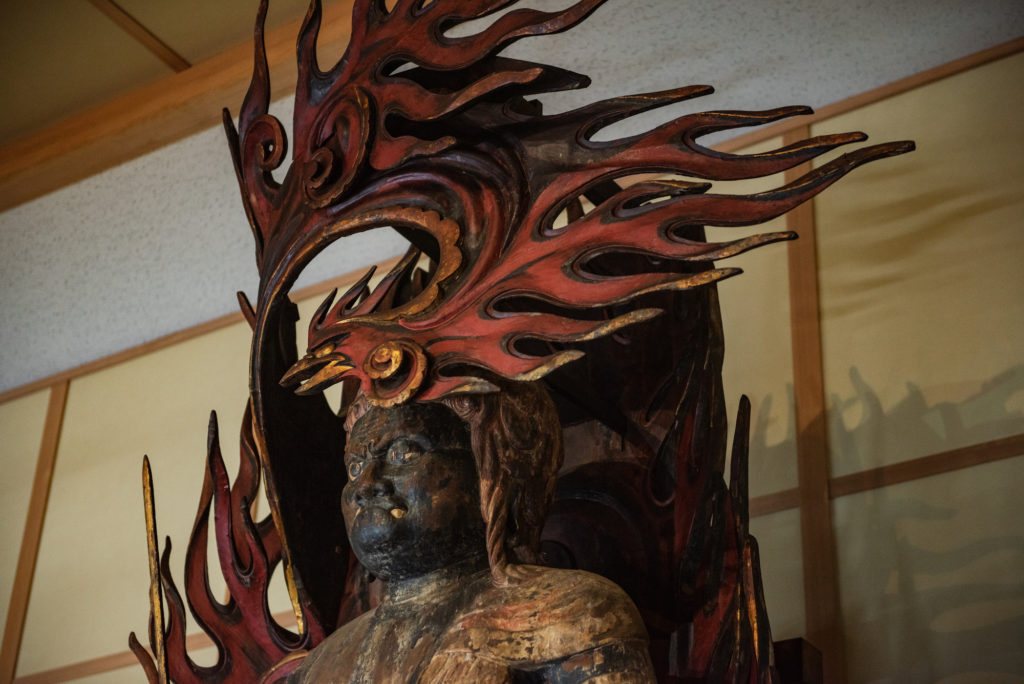
This statue is made with such technical precision and skill, that it looks like it may get up and start moving around at any moment. The paintwork remains intact in large parts, and the statue is a standout simply on artistic merit alone. It is a mute testament to the power of Usa Jingu Shrine at the time, and the kind of capital and talent they could acquire.
We were guided by the Makiodo ambassador of tourism promotion Mr. Hiroyuki Goto whose clear and easy to understand explanations really helped us to understand Buddhism more, along with the changing mores and artistic styles of each era. It offered us a deeper understanding of the entire Rokugo Manzan experience by helping us contextualize everything in this way.
Here, on this peninsula in Western Japan is a place where the prayers of people from thousands of years ago still resonate to this day. We urge you to come and experience it for yourselves.
